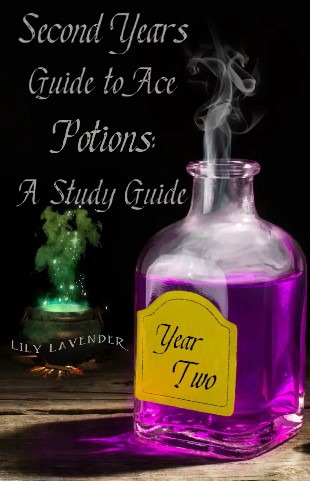Second Years Guide to Ace Potions: A Study Guide
By Lily Lavender
This book is intended for all who need a quick study reference guide for PTNS-201. It has a glossary of terms & its appropriate meanings for the entire course. Each chapter is based on a lesson; where it won't go into grave detail, but will give you the necessary components to study for upcoming tests & assignments. This does not include mid-term & final exams. All detailed information about each topic is in your official lessons with the Professor. DO NOT COPY AS IT IS PLAGIARISM!
Last Updated
Oct. 31, 2022
Chapters
10
Reads
1575
Lesson Seven Study Guide
Chapter 8
Before wands were used in brewing, magical mixtures & compounds were used. Chopped ingredients go into a liquid base to be smoothed out & blended over an open fire. A wooden spoon was used to stir potions in place of a wand. The Snake Bite Antidote's ingredients was dittany, murtlap essence, bezoar, & aloe. These were chopped, heated, & stirred until a paste was made. This antidote is not a potion, as it's a solution with mixed ingredients. These types of mixtures started the uses of serums, tinctures, & potions. Once they discovered this, their potions became powerful, unstable, hazardous, & had new effects.
In the nineteenth century in Vienna, Austria researchers found that potions brewed with wands are different than solutions, both with the same ingredients. Solids, gases, & liquids are all atoms. Negative electrons are connected to the protons, which orbits the nucleus. An atoms number of neutrons can vary due to how many are neutrally charged. When two try to connect, they both push back, like a magnet. While the electrons push back, they also attract the protons in the other. This creates a stagnation between both nuclei. When atoms bond, molecules are created. The magical energy when you use your wand to brew makes it powerful enough to restructure bonds, which leads to a different chemical property than what you started with.



